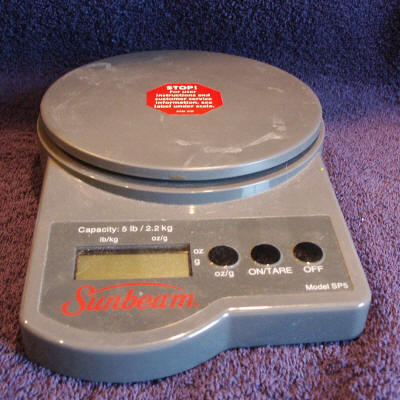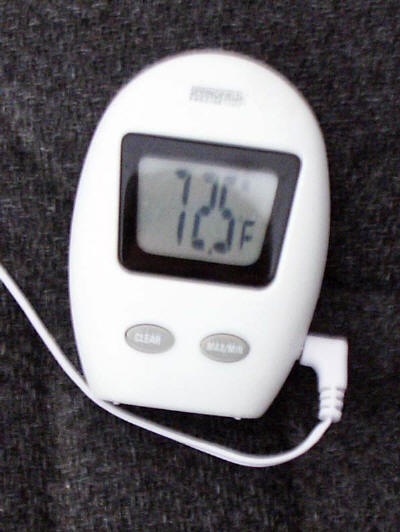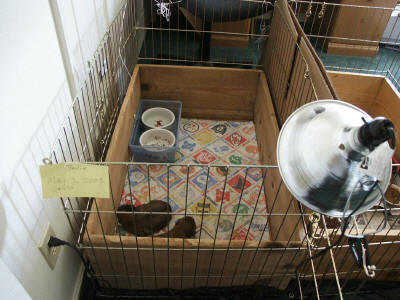|

-
Vaseline & thermometer to take the
moms temperature before deliver
-
baby ear syringe to suction out the
puppies nose and throat of any fluids after delivery
-
floss to tie the umbilical cord with
-
Iodine Tincture to disinfect the
umbilical area
-
alcohol wipes, and scissors
|

These scales go to 5 lbs.
bought at Office Max for $30.00. We later bought some others scales
that will go to 50 lbs. I looked online for digital scales and found
them for $40.00. I enjoy the scales that go to 50 lbs because we can
weight the bigger dogs.
|

Room thermometer with a cord and
meter on the end, to put in the box. This can tell you the box
temperature. Purchased at Home Depot for $10.00 |

Boxes that were made from 1" x 12' boards. With
some 1" x 1" on the ends. We then cut each length in half and nailed
the box together. Items for the box were purchased at Home Depot for
about $50.00 a box. The fence was bought at Petco and PetsMart.
The fence will keep the mom in the box with the babies, and later the babies
from jumping out.
Notice the food dishes in the far
left corner. You have to protect the puppies from climbing in the
water and drowning. Therefore we put the food and water dishes in a
high sided container.
After a litter has been raised and sold, we wash out
the box with 50/50 Clorox and water. This disinfects the box and gets
it ready for a new litter. If needed, the box will be re-varnished to
seal the wood.
|